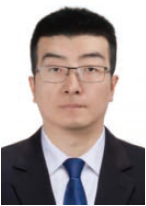Ning Li1*
1State Key Laboratory of Luminescent Materials and Devices, South China University of Technology, Guangzhou, 510640, China
EXTENDED ABSTRACT: The development of novel materials and devices in the emerging photovoltaic (PV) technologies is crucial to accelerating the realization of China's 2060 carbon neutrality target. Combining high-throughput experimentation and robotic automation with materials science, chemical synthesis, and physical characterization will greatly promote innovation and application in emerging PV technologies. In order to realize the industrialization and commercial application of emerging PV technologies, academic and industrial research teams have made a lot of efforts to continuously improve the power conversion efficiency, and also strive to solve the key problems restricting their commercial applications, such as operational lifetime, upscaling property, processing cost, etc. Evaluating the commercial application potential of emerging PV technologies is a multi-dimensional, multi-parameter exploration, which requires a large number of highquality and reproducible experimental data to support. This contribution will analyze and discuss the automatic preparation, characterization, analysis and optimization of emerging PV devices by combining a high-throughput experimental platform with machine learning, realizing efficient and stable PV devices, and further promoting the transition from fundamental research in the lab to practical applications in the real-world context. We believe that active research and development of novel materials and devices based on high-throughput automation experimental platforms will become the key research direction in the next few years.
Keywords: organic photovoltaics; high-throughput experiment; emerging photovoltaics; device stability; machine learning

Ning Li is a professor in the State Key Laboratory of Luminescent Materials and Devices at the South China University of Technology (SCUT). Before joining SCUT, he was a research group leader at Friedrich-Alexander University Erlangen-Nurnberg(FAU) from 2014 to 2021, and a visiting scientist at the Helmholtz Institute Erlangen-Nurnberg for Renewable Energy (HI-ERN). He received his PhD degree in 2014 under the supervision of Prof. Christoph J. Brabec at FAU, Germany. His research interests focus on the development and characterization of solution-processed semiconductors and devices, in particular on the aspects related to the fundamentals and applications of next-generation photovoltaics.